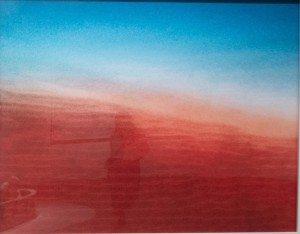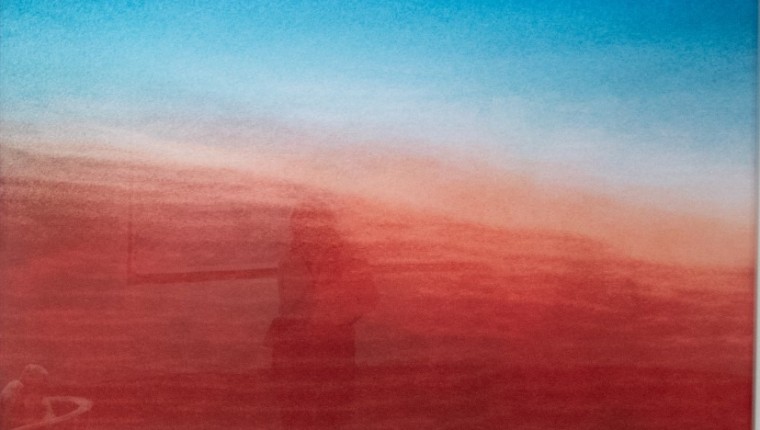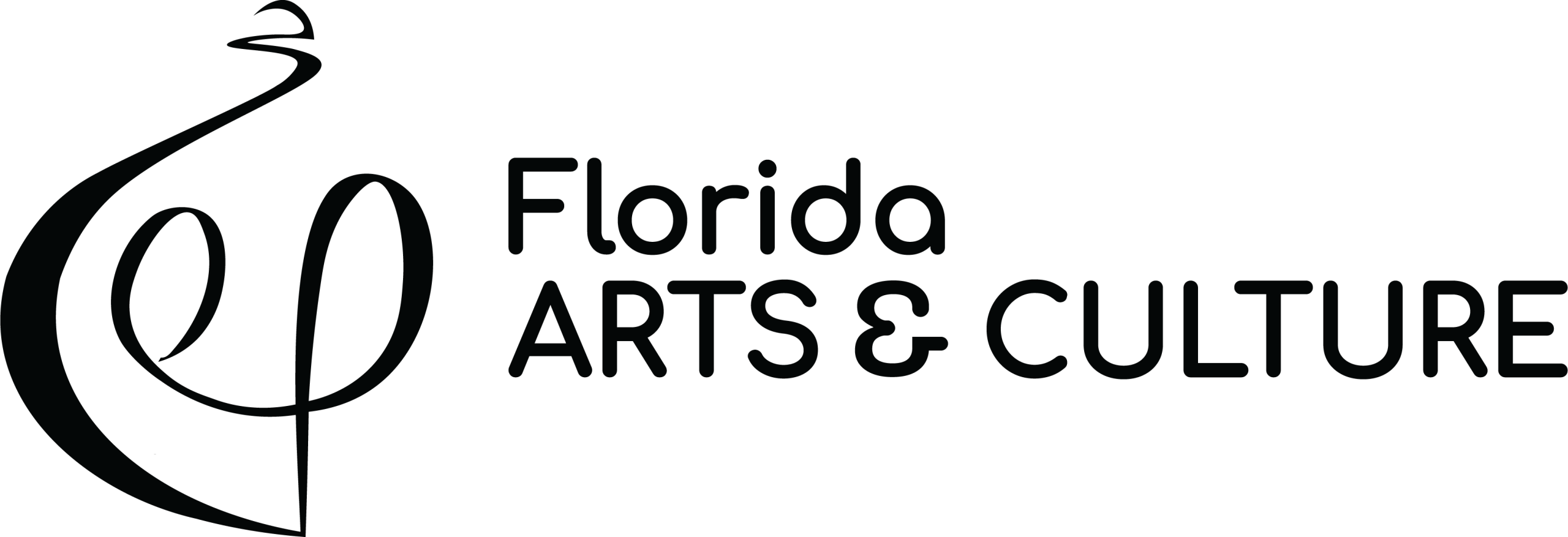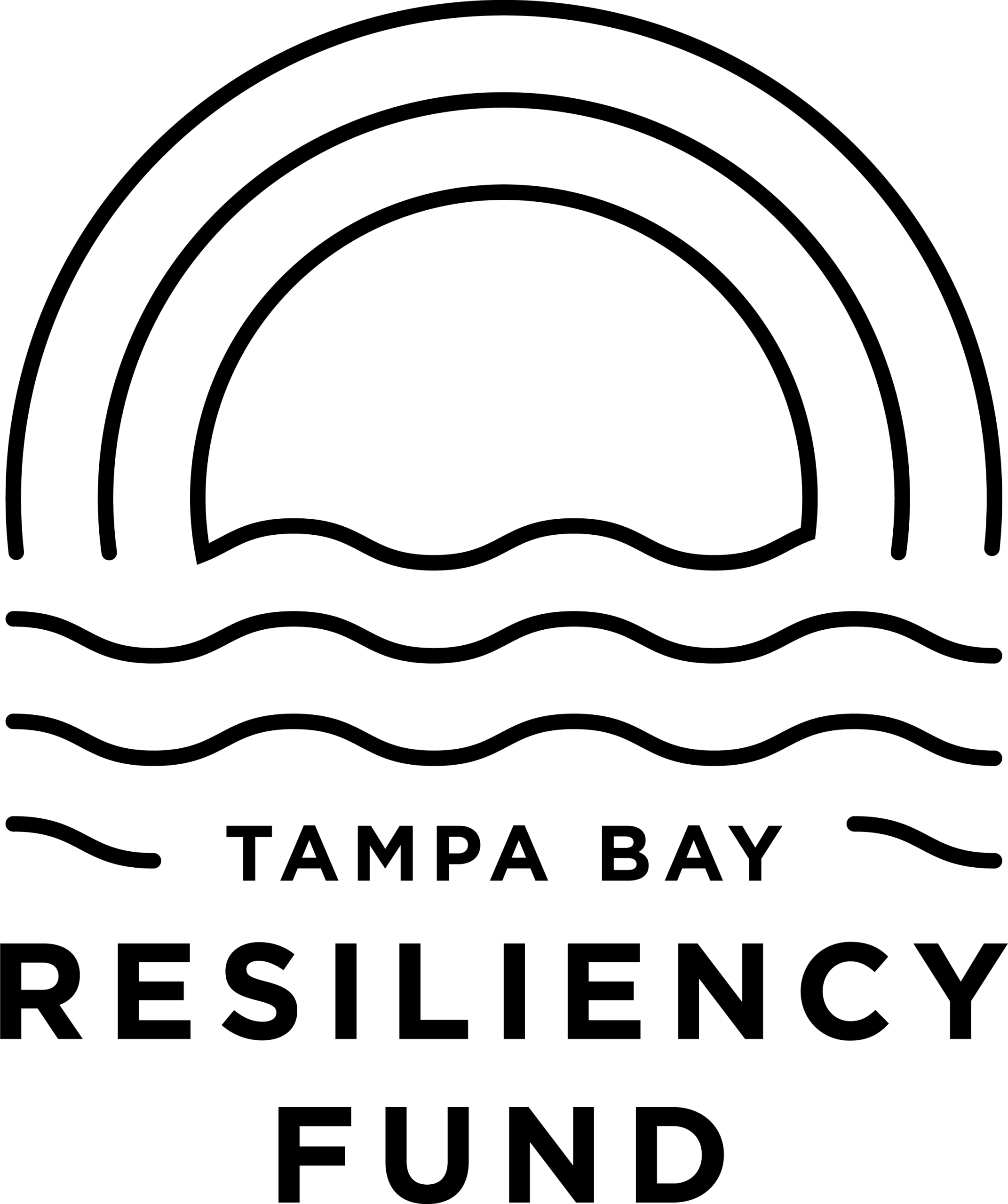Through January 26
Ringling Museum of Art
Sarasota
Details here
The first leg of Skyway 2024: A Contemporary Collaboration opened recently at The Ringling Museum in Sarasota. It’s an eclectic exhibition that brings together traditional art forms like jewelry, sculptures, mural-sized paintings, and woven fabric with contemporary media like TV screens and VR goggles.
A colorful exhibition, it’s the perfect summer outing for anyone wanting to become familiar with Tampa Bay’s artistic talents.
In the exhibition’s catalog, guest curator Evan Garza writes what can be considered a manifesto on the need for diversity, equity and inclusion in Florida’s institutions for education and art. A mixture of public and private institutions such as colleges and museums, Skyway’s five exhibition spaces have a broad range of political forces governing them.
Garza’s manifesto comes at a time following Governor’s Ron DeSantis’s cutting of all arts funding in Florida, and years of anti-gay and anti-trans rhetoric from the Governor’s office. As the subsequent legs of Skyway open across Tampa Bay, we should pay attention to which of Garza’s calls to action come to fruition.
I spoke to three of the artists exhibiting in Skyway at the Ringling Museum – Mohsen Azar, Ainaz Alipour and Rachel de Cuba. Azar and Alipour are both recent graduates from the MFA program at USF Tampa, and de Cuba is an Associate Professor of Visual Arts at St. Pete’s Eckerd College.
Each has a distinct use for modern technology in their work while incorporating traditional artistic methods. Azar speaks about how his photographic works relate to trauma, Alipour discusses how digitization enables fear, and de Cuba shares how familial narratives can be influenced by individual perspectives.
Together, their work represents the variety of art on view in the Ringling’s leg of Skyway.
Azar was included in 2022’s Metadata: Rethinking Photography in the 21st Century at the Ringling Museum where he exhibited images created by sharing digital photographs over and over again. The series titled As of Now consisted of monochromatic abstractions that look more like QR codes than photographs.
His work in Skyway is also abstract, but this time involves more of a painterly aesthetic.
“The As of Now work came out of conversations I had with Wendy Babcock and Jason Lazarus,” says Azar. “Wendy was a professor of mine at USF. She passed away about a month ago.
“She always did a lot more than teaching with her students. She was very invested, very supportive. They really both cared about what photography means in a digital way. So, a lot of conversations we had were about photography and the digital image — and, in a way, the works I have in Skyway are indicative of those conversations.

“As of Now was about the image-sharing system failing – the ways it fails and why it fails. This work is the same idea but with systems that are designed to recognize pictures, to process pictures, to edit them, and make them look better. They all are based on how the algorithm that’s designed to process and understand images breaks, fails and malfunctions.
“With AI, there are algorithms designed to get trained on a certain subject matter and give the result you want. For example, if you train an algorithm with a million pictures of different cats and then ask the algorithm to differentiate a picture of a cat from a picture of a dog, it will do it for you.
“For these images in Skyway, take the example of ‘cat’ and replace it with ‘violence.’ These images were made through algorithms to remove violence from a depiction of violence—whatever the algorithm thinks ‘violence’ means.
“And it does it very well, actually. If there’s a picture of some war zone where there’s an explosion near the horizon, the algorithm will recognize the explosion and know that it’s violence – the horizon is not, the beach is not, but the explosion is a depiction of violence, and is a depiction of war. The algorithm will find it and remove it.
“But, if you feed an image to the algorithm that is all explosion, if you feed the algorithm an image that, instead of one dead body, has twenty dead bodies in it, the algorithm fails. It does recognize the violence, but that means it’s recognizing the whole picture as the subject matter of violence. So, when you ask it to remove it, it gets confused.
“It breaks down because all it can see is violence. It kind of eats itself. It shrinks in on itself, and finds very few pixels that are still clear and OK to use. What it comes up with is a painting-like image.”

Azar’s photographs in Skyway resemble color-field paintings. Some are a wash of red or magenta, with no clear subject. It’s difficult to even recognize that they’re made using a photographic process. It’s because Azar’s subject isn’t something that can be depicted.
“The question is, to what extent can you teach pain to an algorithm?” says Azar. “It’s supposed to be perfect. It’s supposed to understand what you mean, but it’s interesting to what extent an algorithm can be trained to comprehend the definition of trauma. It fails in understanding the more conceptual requests.”
Azar’s personal history influences his use of trauma as a subject in his work. “As an Iranian artist living in the United States, it does make sense, to me, as a photographer, to think about pain in photography, the depiction of pain, violence and war in images,” he says.
“It’s always been a little bit of a challenge, for me, when discussing my work – how much do I talk about my identity? Recently, I’ve been encouraged to do so in relation to my work.
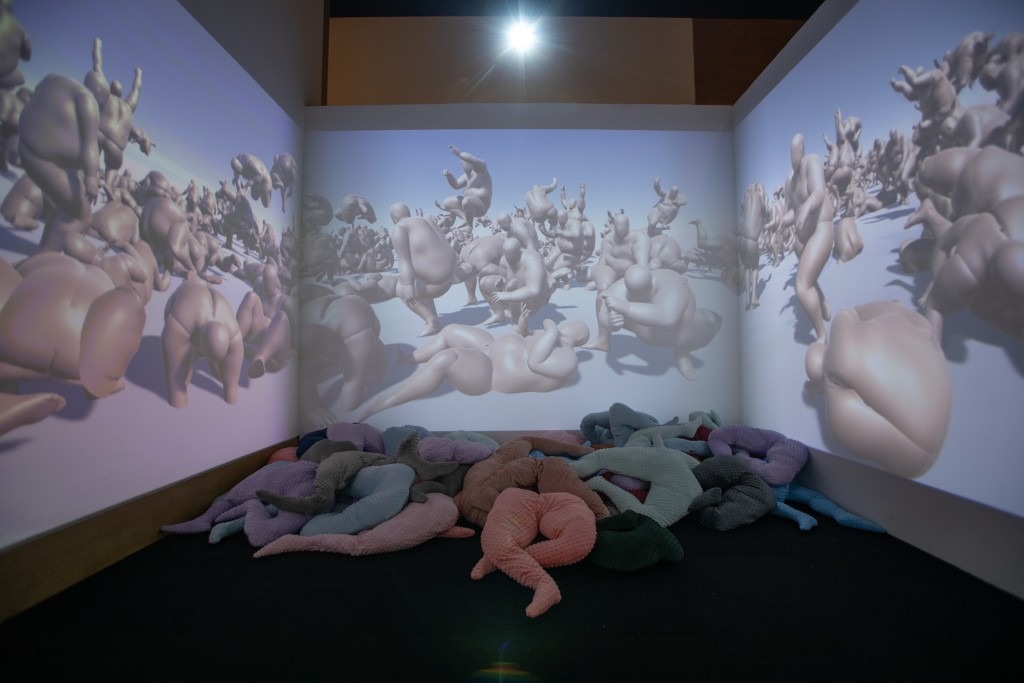
Alipour uses digital technologies as elements of immersive installations alongside hand-sewn plush pillows in the shape of body parts. Viewers become immersed in chaotic, terrifying images – either as projections on the gallery walls or in VR, while sitting on comfortable pillows. It’s a safe way to face your fears while breaking the cardinal rule of the gallery – don’t touch.
“The work is about the relationship between the digital and the tangible,” says Alipour. “The fabric sculptures in Skyway have fabric that is really cozy, and you want to touch it.
“With VR, I want the viewer, when they’re in the VR goggles, to experience discomfort in the digital space but be settled in a physical space of comfort.”
The terrifying digital images in the piece consist of a mob of 3D figures moving in an erratic, chaotic pattern. The figures are anonymous, Caucasian, they have no discernible facial features, and they seem either genderless or pseudo-masculine. They scurry about, and bump into the viewer.
“In the VR goggles, you find yourself in a place that doesn’t have any ground,” says Alipour. “So you feel like you’re about to fall, and you’re getting slapped and kicked by those characters because you’re in between them.
“I was thinking about this figure that can be anybody and nobody. There’s no face, the upper side of the body is more masculine and the lower side is more feminine, and no genitalia. It was important for me for them to be genderless. I also wanted their skin to be a little like cloth dolls.
“For the sewn pieces, I usually trace everything out of my own figure. The pillows on the floor are traces of my legs. I’m sitting on the floor on the fabric, and I just trace my body form on them.
“The way that digital and analog technologies are treating the concept of body is the thread, for me. I’m finding the dialog between these two things.”

“I hadn’t sewn before I came to USF. I was looking for comfort in my life — anybody with immigration will get that. I just got into sewing, and it’s actually comforting and painful at the same time if you poke or stab your finger.
“While sewing, I think about where I learned how to do this, and who taught it to me,” says Alipour. “I have all the memories of my grandma teaching me to sew.”
Like Azar, a distrust for digitization is an aspect of Alipour’s work, which comes across with the digital elements representing chaos and discomfort. Digital technologies can disseminate truths, but can also be used to spread misinformation. You can feel a part of something, or feel completely removed.
“Like last year, with the women’s freedom movement in Iran, my only connection to my home country was digital media, reading news over a digital platform,” says Alipour. “I couldn’t do anything. It was, honestly, really painful because I was seeing my friends going to something that was happening on the next street to where I used to live, and the places that were along my everyday commute.
“My piece in Skyway was created during that time, and I got inspiration from that movement, and anxiety, but the piece isn’t directly about it.
“Years ago, when I was in Iran, I was doing some street performances. I would just stand on the sidewalk and do hula hoop. I was in my shirt and pants, and of course a hijab.
“I hadn’t realized — it’s like you live something but you don’t realize how it is because you’re always in the bubble of your own people — but I did that, and the reactions I was getting, for the five or six hours I was performing, from the people were shocking. In a good way and a bad way.
“I was 23 or 24 years old, and you wouldn’t think a girl doing hula hoop in a hijab in the street attracts lots of people,” says Alipour. “That’s how I started thinking about my body.”

The work in Skyway by de Cuba combines technology with domesticity. Her work reminds us how our personal experiences are often influenced by those around us. Familial histories are filled with apocryphal facts, subjective perceptions and hidden agendas. One piece that has a TV screen partially obscured by a sheer curtain beckons the viewer to reach out and open it.
“I worked strictly digitally at first, but I hated it,” says de Cuba. “So, I started experimenting with ways of softening the technology. I became — and am still — really obsessed with Gordon Matta-Clark, an anti-architect who made it precarious to move through spaces.
“I’ve thought a lot about what enters, what leaves, what is my role as the creator, and where does the viewer meet me? Most of my work needs to be completed by someone else.”

“I’m also thinking of storytelling and the interpretation of an event. When you hear a story, you’re hearing it through someone else who’s reimagined it or heard it through someone else who’s heard it through someone else.
“Especially in a family, you’re always only getting a part of the story. You’re only getting one side, you’re not getting every perspective, and that changes how you interact with the story, or the person.
“In my particular case, a lot of times, the stories I’ve heard in my upbringing have not only been translated through someone else’s thoughts but also through language because my family spoke many different languages. Growing up, I didn’t learn any of those languages – I’ve only spoken English and some Spanish.
“This meant that to speak to my grandparents as they got older, I had to speak through my dad who would translate for us. I think about that translation, and layering of stories, and who’s telling what, and how it becomes more complicated, and I lean into that.”

If the curtains in de Cuba’s piece were open, or opaque, or the screens were fully visible, or completely obstructed from view, it would seem too resolved. By revealing only part of its contents, the piece is an allegory for how memory stores our empirical experiences. It appears as a window to the outside world, and effectively places the viewer in a domestic setting, like being in a house.
“If it seems like we’re looking out through a wall, then we’ve domesticated the space,” says de Cuba. “What is to say a museum is not a home?
“Most of my found materials that I work with, like tapestries, are domestic materials. I mostly work with quilts, bedsheets, curtains, and sometimes drapery that’s more for decorative purposes than a practical purpose.
“I’m thinking about lived-with art. Art means something highbrow, but what about tchotchkes? I really love the aged quality of found materials. I don’t want something that’s pristine. I want something that’s tattered because it shows the longevity – and it shows the actual use and not just its decorative form.
“I’ve had people come up to me and say, ‘My grandmother had that.’ They’ll see a quilt pattern and say, ‘I remember this quilt that so-and-so had that was that pattern.’ That kind of connection is really important to me.”

“Using found materials, familial artifacts, and vintage store finds breaks down the white cube aspect of the art temple. The gallery in the museum comes across more like someone’s living room. It’s much more of a welcoming installation.
“I imagine my work living in the white cube — I want it to be in the white cube,” says de Cuba. “But my question is, ‘Why can’t the white cube be softer? Why can’t the white cube be quieter, a little gentler, and a little more feminine?’
“Being in digital art and tech media typically lent itself to a male gaze or tech-bro clean, crisp style, and I was just never into it. I was always OK with using strange cameras and frame rates – I didn’t need a crisp, clear image.
“I’ve never called my work ‘feminine work’ or ‘women’s work,’ but I am interested in what a feminine touch does to a medium that has always been in this seemingly masculine realm.
“I’m also very aware of the domestic read of my work that lends itself to a feminine storytelling. Nobody says, ‘My grandfather gave me a quilt that looked like that.’ It’s usually, ‘My grandmother had that,’ or ‘My grandparents had those curtains.’ But very infrequently have I ever had anyone talk to me about their grandfather.
“I also use digital artifacts from the past. The work in Skyway has a sound component of digitized cassette tapes that my grandparents made. They’re mixtapes, or they would record records onto cassettes, and quite a few of them got left in an outdoor space of their home.
“I got them, and digitized them — they have a lot of weathering from the heat. It’s kept in the audio, so you’ll hear it. That’s layered with the sound of calls from the red-shouldered hawk and barred-owl. We had both of those living on the property in South Carolina where I made the work.
“They have a symbiotic relationship, so typically they’ll share nests from year to year, and when one leaves the other takes over the nest. But they don’t get along with each other, so if that doesn’t happen right at the right point in time there’ll be friction.”
“One piece has an image of my grandparents’ mountain home — it’s called a kunuku in Aruba. There’s a main area in town where everyone would have their houses, and they would also have kunukus to go to on weekends or summers. It was made of shipping containers.
“Aruba is a desert island, so the kunuku is surrounded by cacti and desert plants. It’s an image from when I was a kid.
“For years, my mom and I have been digitizing our familial images and recordings, so that’s how I find a lot of what I use in my work.
“Now, the family is like, ‘Do you want this?’ I get a lot of doilies and random household objects — and I usually do use them. I’m the person in the family to whom everybody can bestow their junk,” says de Cuba. “I find it to be really useful.”
The work by these artists in Skyway provides personal experiences that we as viewers can share as our own. We’re invited to contribute our thoughts and feelings to their art by interacting with it, viewing it amongst family, and empathizing with it. Their work is a testament to our local colleges who’ve produced such world-class artists operating in some of art’s most influential, avant-garde theories and forms.
If Skyway’s purpose is to showcase Tampa Bay’s best visual art and artists, the Ringling leg of the exhibition achieves its goal.
Featured Skyway Artists at the Ringling
Caitlin Albritton
Ainaz Alipour
Mohsen Azar
Saumitra Chandratreya
Elisabeth Condon
Robyn “Avalon” Crosa
Rachel de Cuba
Jake Fernandez
Akiko Kotani
Carol Mickett and Robert Stackhouse
Libbi Ponce
Michael Vasquez
Joo Woo
